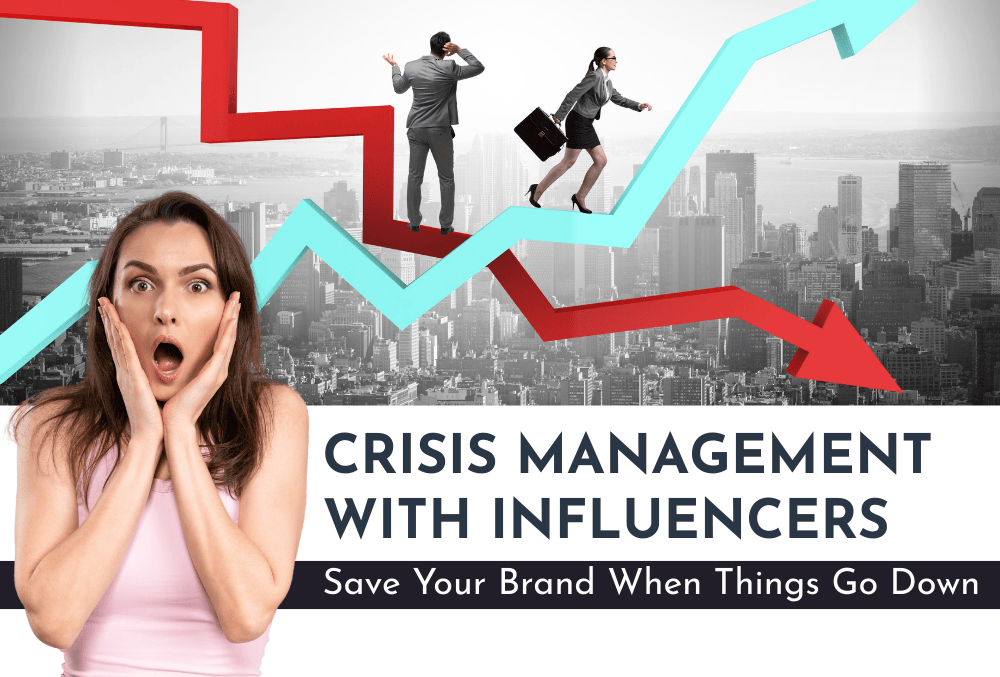In today’s influencer-driven world, brands don’t just market products — they co-create trust. But what happens when that trust breaks?
From inappropriate remarks by creators to product misrepresentation or backlash from misaligned values, influencer-related crises can go viral in hours. And once it’s out, you can’t hit “unsend.”
The good news? Crisis management with influencers isn’t just damage control — it’s brand leadership. This guide will show you how to respond, recover, and come out stronger.
Real-Life Example: The Balenciaga Backlash
In 2022, Balenciaga faced massive backlash after releasing a controversial campaign featuring children and inappropriate themes. Influencers distanced themselves. The brand had to:
- Issue public apologies
- Pull the campaign
- Take accountability
Key Takeaway: Even luxury brands aren’t immune. Choosing the right creatives and managing post-campaign fallout are non-negotiable today.
Common Influencer-Related Crises Brands Face

- Misinformation: Creators making false claims about product benefits
- Off-brand behavior: Influencers posting content that contradicts brand values
- Backlash from past content: Old tweets or posts resurface
- Insensitive promotions: Marketing during a national tragedy or social issue
- Cultural insensitivity or tone-deafness
Step-by-Step Crisis Management Framework
Step 1: Monitor in Real Time
Use tools like:
- Google Alerts
- Brandwatch
- Sprout Social
- Meltwater
This helps you detect negative sentiment before it escalates.
Tip: Assign a dedicated crisis response team that includes PR, legal, influencer managers, and marketing.
Step 2: Evaluate the Scale of the Crisis
Ask:
- Is it localized or viral?
- Does it involve legal violations or just reputational risks?
- Is the creator still aligned with your values?
This determines if you should respond publicly or behind the scenes.
Step 3: Communicate Fast, But Thoughtfully
Silence can look like guilt. Here’s how to respond:
- Acknowledge the issue (“We are aware…”)
- Apologize if needed (“We take this seriously…”)
- Share next steps (“We are reviewing our partnerships…”)
Avoid: Deflecting blame or staying silent.
Step 4: Pause Campaigns and Review Partnerships
Temporarily pause the influencer’s campaign across all channels. Internally review:
- Contracts (for moral clauses or breach)
- Content alignment with your brand pillars
- Potential PR backlash of continuing the collaboration
Step 5: Go Transparent — Then Go Quietly Strategic
Once you’ve communicated publicly, act strategically:
- Retrain or rebrief your influencers
- Update content approval workflows
- Establish stricter vetting protocols
How to Prevent an Influencer Crisis in the First Place

1. Vet Influencers Deeply
- Past tweets
- Political or social stances
- Authenticity of their audience (bot check)
2. Set Clear Contracts
Include:
- Brand alignment clauses
- Content approval terms
- Crisis response obligations
3. Conduct a Pre-Campaign Audit
Ask: “If this creator made headlines tomorrow, would we be okay being associated?”
How to Respond Publicly — Template
“We acknowledge recent concerns regarding [situation]. As a brand committed to [core values], we are reviewing the matter seriously. We’ve paused all associated campaigns and are working toward a resolution that reflects our brand standards.”
FAQs: Crisis Management with Influencers
Q1. Should I drop the influencer immediately during a crisis?
Ans: Not always. First, assess the situation’s severity. If it’s a minor misstep, re-education might suffice. If it’s a major brand conflict, consider cutting ties.
Q2. Can brands be held legally accountable for influencer mistakes?
Ans: Yes — especially if the influencer makes unverified claims or misrepresents your product. Contracts and disclaimers are essential.
Q3. Should brands address every criticism publicly?
Ans: No. Tackle genuine issues, but don’t feed trolls. Public response should be reserved for significant concerns.
Conclusion: Influence Is Powerful — Handle with Care
Influencer marketing offers unmatched brand reach — but also carries risks. The smartest brands aren’t the ones that avoid problems entirely — they’re the ones prepared for them.
By setting proactive systems, clear values, and a human-first response plan, you don’t just protect your brand — you reinforce your credibility.
So the next time things go down, you’ll already know how to rise.

